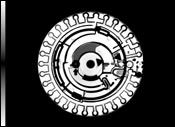Ultrasonic Imaging Finds Voids, Cracks and Bonding Defects
As material costs climb, acoustic micro-imaging (AMI) is increasingly being used for non-destructive inspection and quality control of microelectronic components and assemblies, adhesive and welded bonds, solid part walls, and other applications where bond integrity, cracking, or voids are an issue.
As material costs climb, acoustic micro-imaging (AMI) is increasingly being used for non-destructive inspection and quality control of microelectronic components and assemblies, adhesive and welded bonds, solid part walls, and other applications where bond integrity, cracking, or voids are an issue. AMI analyzes the passage of ultra-high-frequency pulses of ultrasound through a material, which can reveal the presence of internal defects. Voids, cracks, and delaminations are usually associated with air gaps that reflect ultrasound at frequencies of 10 to 300 MHz rather than allowing its further transmission.
Plastics processors are making greater use of AMI due to the higher cost of materials and greater focus on quality improvement. “Companies don’t want to waste parts and they want to confirm that their process can manufacture good parts,” says Steve Martell, manager of technical support services for Sonoscan Inc., which reportedly invented AMI technology in 1973 and makes inspection systems for laboratory and production use.
Picture this bond
Determining the bond integrity between molded plastics and other materials has always been a difficult task for processors. Companies have traditionally relied on cutting a cross-section of the part in order to confirm the bond interface of glued, overmolded, or welded products. This destructive process is time consuming, and it is difficult to extrapolate the data from testing a small number of parts to the overall production process, says Tom Adams, a consultant with Sonoscan.
The benefits of AMI are its non-destructiveness and speed. It can take as little as 5 sec to scan a small part. The C-SAM, or C-Mode Scanning Acoustic Microscope, is an ultra-high-frequency ultrasonic imaging system that looks inside opaque samples and reveals internal features such as defects and construction details.
The system utilizes an ultrasonic transducer that scans the part. Since high-frequency ultrasound does not travel through air, a coupling fluid such as deionized water is used to deliver the ultrasound pulse from the transducer lens to the part surface. The transducer acts as both sender and receiver. A very short acoustic pulse enters the sample and return echoes from interfaces within the part are received at a rate of several thousand times per second. The return times are a function of the distance from the interface to the transducer and the material's acoustic properties.
An oscilloscope display of the echo pattern, known as an A-Scan, shows defects as areas of higher contrast in the image. An electronic gate “opens” for a defined duration, allowing only the information from a specific interface within the part to be imaged while excluding all other echoes. Completed C-SAM images of the internal structure of a sample are produced in about 10 sec.
AMI can be used on parts as large as 18 x 24 ft. A high-resolution scan of large parts can take more than 10 min.
Precise detection
The ultrasonic frequency determines the resolution with which defects can be detected. Generally, a higher frequency means a smaller wavelength and consequently a higher resolution. At 200 MHz, a 10-micron-wide defect can be detected, while at 100 MHz a 25-micron-wide fault is detectable. However, a transducer can actually detect defects an order of magnitude smaller than its resolution limit but not produce a resolvable image, says Martell.
AMI is used extensively in microelectronics where silicon chips are bonded to a plastic substrate. In those applications, AMI is incorporated in-line in the manufacturing process. Sonoscan also sees growing penetration in biomedical applications such as injection molded cartridges. AMI can verify bonds for most plastic materials except fiberglass composites. Acoustic imaging has limitations with high-glass-content materials because of its sensitivity to air gaps.
Sonoscan’s AMI inspection system is suitable for R&D, prototyping, manufacturing QC, and failure analysis. The company’s hardware and software packages range from $175,000 for the base model up to $250,000 with options. Part testing is also offered as a laboratory service in the U.S., Europe, and Far East.
Related Content
X-Ray Vision Inside Parts Gets More Affordable for Processors
Shimadzu’s new benchtop x-ray CT scanner provides internal and external metrology and flaw detection at a fraction of the previous cost.
Read MoreInline Inspection System for Wood Plastic Composites
Pixargus’ ProfilControl 7 DX WoodPlasticComposites measure all dimensions and geometrics, including deep grooves.
Read MoreUsing a Melt Flow Indexer to Test Your Pressure Transducer
The MFI tester enables collection of meaningful pressure data in transducers in a relatively short time, providing realistic measures of the response time of a pressure transducer. This information is critical in the interpretation of pressure data measured in an extrusion process.
Read MoreUpgrade to Accelerated Artificial and Natural Weathering Testing
NPE2024: Atlas S³T system is designed for the company’s Weather-Ometer Ci4400 and Ci5000 instruments.
Read MoreRead Next
For PLASTICS' CEO Seaholm, NPE to Shine Light on Sustainability Successes
With advocacy, communication and sustainability as three main pillars, Seaholm leads a trade association to NPE that ‘is more active today than we have ever been.’
Read MoreBeyond Prototypes: 8 Ways the Plastics Industry Is Using 3D Printing
Plastics processors are finding applications for 3D printing around the plant and across the supply chain. Here are 8 examples to look for at NPE2024.
Read More














